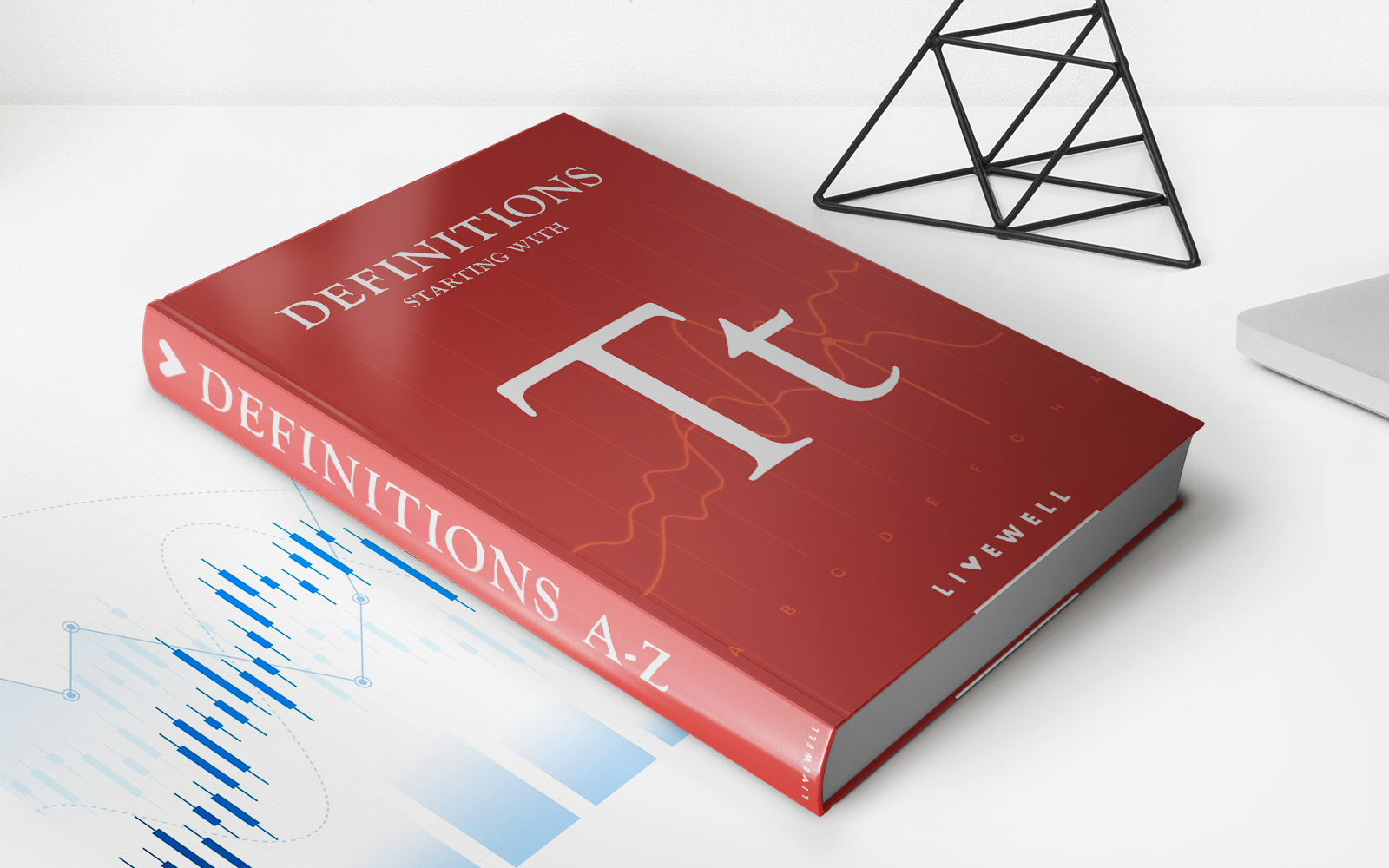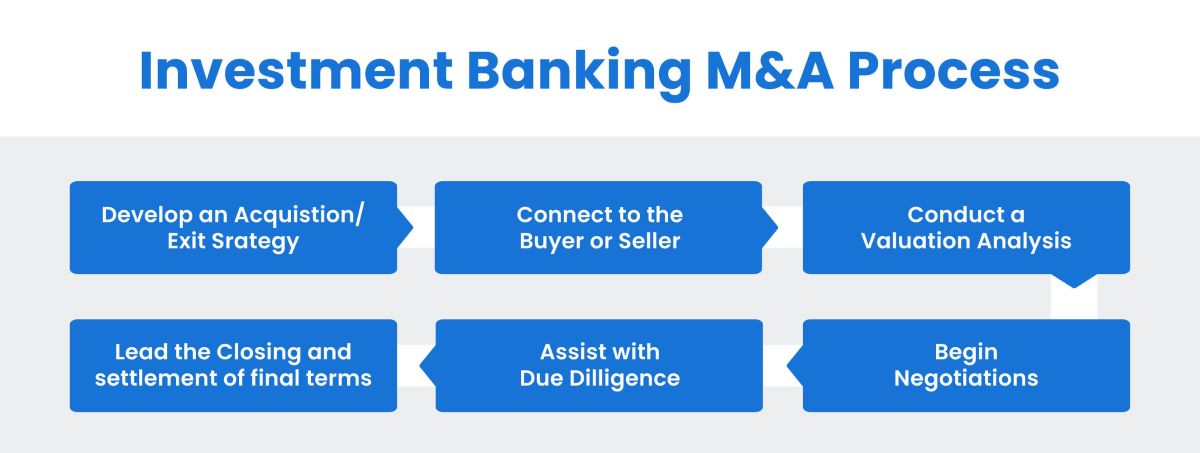

Finance
How To Avoid Capital Gains Tax On Mutual Funds
Modified: December 30, 2023
Learn effective strategies to minimize capital gains tax on your mutual funds. Take control of your finances and optimize your investment returns.
(Many of the links in this article redirect to a specific reviewed product. Your purchase of these products through affiliate links helps to generate commission for LiveWell, at no extra cost. Learn more)
Table of Contents
Introduction
Investing in mutual funds can be a lucrative way to grow your wealth and achieve financial goals. However, it’s important to understand that there can be tax implications associated with mutual fund investments, specifically capital gains tax. When you sell a mutual fund at a profit, you may be subject to capital gains tax on the appreciation in the value of your investment.
Capital gains tax is a tax levied by the government on the profits made from selling investments, including mutual funds. The tax rate you’ll owe depends on how long you held the investment before selling and your income tax bracket. Generally, short-term capital gains, from investments held for one year or less, are taxed at higher rates than long-term capital gains, from investments held for more than one year.
While it may seem inevitable to pay capital gains tax on your mutual fund investments, there are strategies you can employ to minimize or even eliminate this tax burden. By understanding these strategies and incorporating them into your investment plan, you can retain more of your earnings and potentially accelerate your wealth-building journey.
In this article, we’ll explore several effective strategies to help you avoid or reduce capital gains tax on your mutual funds, allowing you to keep more of your hard-earned money working for you.
Understanding Capital Gains Tax on Mutual Funds
Before diving into strategies to avoid capital gains tax on mutual funds, let’s first gain a clear understanding of how this tax is calculated. When you sell your mutual fund shares, you may be subject to capital gains tax on any profits you have earned.
There are two types of capital gains: short-term and long-term. Short-term capital gains are generated from investments held for a year or less, while long-term capital gains are generated from investments held for more than a year.
The tax rate on short-term capital gains is typically higher and is based on your ordinary income tax rate. On the other hand, long-term capital gains are subject to lower tax rates, usually ranging from 0% to a maximum of 20%, depending on your income level.
It’s important to note that capital gains tax is only applicable when you sell your mutual fund shares. If you hold onto your funds and don’t sell, you won’t owe any capital gains tax until you decide to liquidate your investment.
Another important factor to consider is the concept of “capital gains distributions.” Mutual funds are required to distribute any realized capital gains to their shareholders at least annually. Even if you haven’t sold any of your mutual fund shares, you may still be liable for capital gains tax if the fund has distributed gains during the year. This can catch some investors off guard, as they may have to pay taxes on gains they didn’t actually realize.
It’s essential to stay informed about capital gains distributions for the mutual funds you hold. They are typically reported on Form 1099-DIV, which you receive from your fund company. Being aware of these distributions can help you plan your tax strategy effectively and consider potential tax-saving opportunities.
Now that we have a solid understanding of how capital gains tax works on mutual funds, let’s explore strategies to minimize or even avoid this tax burden.
Strategies to Avoid Capital Gains Tax
While it may not be possible to completely avoid capital gains tax on mutual funds, there are several strategies you can employ to minimize its impact on your investment returns. Let’s explore these strategies:
- Hold on to Your Mutual Funds for the Long Term: One of the simplest ways to reduce capital gains tax is to hold on to your mutual funds for more than one year. By doing so, your gains will be classified as long-term capital gains, which are subject to lower tax rates. If you have a long-term investment horizon, consider adopting a buy-and-hold strategy to take advantage of these favorable tax rates.
- Utilize Tax-Advantaged Accounts: Another effective strategy is to invest in mutual funds through tax-advantaged accounts such as Individual Retirement Accounts (IRAs) or 401(k)s. Contributions to these accounts are made with pre-tax dollars, and any growth and earnings within the account are tax-deferred or tax-free. By investing in mutual funds within these accounts, you can delay or potentially eliminate capital gains tax altogether.
- Opt for Tax-Efficient Mutual Funds: Certain mutual funds are designed to be tax-efficient by minimizing capital gains distributions. These funds employ strategies such as investing in stocks with low turnover or using tax-managed strategies to reduce taxable gains. By selecting tax-efficient funds, you can decrease the likelihood of incurring capital gains tax on distributions.
- Employ Tax Loss Harvesting: Tax loss harvesting involves selling investments that have experienced a loss to offset any capital gains on other investments. By strategically realizing losses, you can reduce your overall taxable gains and potentially offset capital gains tax. However, it’s important to fully understand the tax rules and consult with a tax professional before implementing this strategy.
- Consider Charitable Donations: Donating appreciated mutual fund shares directly to a qualified charity can be a tax-efficient way to avoid capital gains tax. When you donate appreciated assets, you not only avoid paying capital gains tax on the appreciation, but you may also be eligible for a charitable deduction on your tax return. Consult with a tax advisor and the charity of your choice to explore this option further.
By implementing these strategies, you can mitigate the impact of capital gains tax on your mutual funds and potentially increase your after-tax returns. It’s important to evaluate your individual circumstances and consult with a financial advisor or tax professional to determine the most suitable approach for your specific needs.
Hold on to Your Mutual Funds for the Long Term
One effective strategy to minimize capital gains tax on your mutual funds is to hold on to them for the long term. By doing so, you can take advantage of the lower tax rates applied to long-term capital gains.
When you hold on to your mutual funds for more than one year, any gains realized from selling those funds will be classified as long-term capital gains. The tax rates for long-term capital gains are typically lower than those for short-term gains, providing you with potential tax savings.
By adopting a buy-and-hold investment strategy, you can not only optimize your tax situation but also allow your investments to grow and compound over time. This long-term approach may be especially beneficial for investors who have a time horizon of several years or even decades.
It’s important to note that holding on to your mutual funds for the long term does not guarantee that you won’t incur capital gains tax. If the value of your funds appreciates during the holding period and you sell, you will still have to pay taxes on the gains made. However, the advantage lies in the fact that these gains will be taxed at the long-term capital gains tax rate, which is typically lower than the short-term rate.
In addition to potential tax benefits, holding on to your mutual funds for the long term can also align with your investment goals. By maintaining a long-term focus, you can ride out short-term market fluctuations and potentially benefit from the overall upward trajectory of the market.
However, it’s essential to carefully evaluate your investment strategy and ensure that it aligns with your financial goals and risk tolerance. While holding on to your mutual funds for the long term can offer tax advantages, it’s important to regularly review your portfolio and make adjustments as needed to maintain a well-diversified and balanced investment strategy.
In summary, by adopting a long-term investment approach and holding on to your mutual funds for more than one year, you can potentially minimize the impact of capital gains tax. This strategy allows you to take advantage of the lower tax rates applied to long-term capital gains while also giving your investments time to grow. Remember to consult with a financial advisor or tax professional to determine the most suitable holding period for your mutual funds and to ensure that your investment strategy aligns with your overall financial objectives.
Utilize Tax-Advantaged Accounts
Another effective strategy to minimize capital gains tax on your mutual fund investments is to take advantage of tax-advantaged accounts such as Individual Retirement Accounts (IRAs) or employer-sponsored retirement plans like 401(k)s.
Contributions made to these retirement accounts are typically made with pre-tax dollars, meaning that the money you contribute reduces your taxable income in the year of contribution. This can result in immediate tax savings. Additionally, any growth and earnings within these accounts are either tax-deferred or tax-free, depending on the type of account.
By investing in mutual funds within a tax-advantaged account, you can potentially delay or even eliminate capital gains tax. Any gains realized within the account will not be subject to current taxation. Instead, taxes are deferred until you withdraw funds from the account, usually during retirement.
This can have significant benefits for long-term investors. By allowing your investments to grow within a tax-advantaged account, you can benefit from compounding returns without the drag of annual capital gains taxes. This can result in accelerated wealth accumulation over time.
When considering tax-advantaged accounts, it’s important to understand the specific rules and limitations that apply to each type. Traditional IRAs and 401(k)s offer tax-deferred growth, meaning you will owe taxes when you withdraw the funds in retirement. Roth IRAs and Roth 401(k)s, on the other hand, offer tax-free growth, meaning your withdrawals in retirement are generally tax-free.
It’s worth noting that there are contribution limits and eligibility criteria for tax-advantaged accounts. For example, in 2021, the contribution limit for both traditional and Roth IRAs is $6,000 (or $7,000 for those aged 50 and older). Employer-sponsored retirement plans like 401(k)s may have higher contribution limits, typically determined by your employer.
It’s important to take advantage of these tax-advantaged accounts as much as possible within the limits of your financial situation. By strategically allocating your investments between taxable and tax-advantaged accounts, you can optimize your overall tax picture and potentially reduce the impact of capital gains tax on your mutual fund investments.
Remember to consult with a financial advisor or tax professional to determine the most suitable tax-advantaged accounts for your needs and to ensure that you are taking full advantage of these beneficial investment vehicles.
Opt for Tax-Efficient Mutual Funds
When it comes to minimizing capital gains tax on your mutual funds, selecting tax-efficient funds can be a strategic move. Tax-efficient mutual funds are designed to minimize taxable distributions and help investors reduce their tax liabilities.
One key factor that determines the tax efficiency of a mutual fund is the fund’s turnover ratio. Turnover ratio measures the frequency with which a fund buys and sells securities within its portfolio. A higher turnover ratio indicates more frequent trading, which can trigger capital gains taxable to investors.
By opting for mutual funds with lower turnover ratios, you can potentially reduce your exposure to capital gains tax. Funds with low turnover tend to generate fewer taxable events and may distribute fewer capital gains to shareholders.
Tax-managed funds are another option to consider. These funds employ specific strategies to minimize taxable distributions. For example, they may actively harvest losses to offset gains or utilize in-kind exchanges to avoid selling securities and triggering taxable events.
Index funds and exchange-traded funds (ETFs) are often touted as tax-efficient options. These passively managed funds aim to replicate the performance of a specific market index, resulting in lower turnover and potential tax savings. Additionally, ETFs offer a unique structure that allows for in-kind exchanges and the avoidance of taxable events.
It’s important to note that while tax-efficient funds can help minimize capital gains tax, they may not always align with your investment goals or preferences. Before making investment decisions, consider factors such as fund performance, expense ratios, and overall investment strategy. Tax efficiency should be considered alongside other important criteria.
To determine the tax efficiency of a mutual fund, you can review the fund’s prospectus, which provides important information about the fund’s investment strategy, fees, and tax considerations. Third-party research sources and financial advisors can also provide insights into a fund’s tax efficiency.
Remember, while tax-efficient funds can be beneficial, the impact on your overall tax situation will depend on your individual circumstances. It’s essential to consult with a financial advisor or tax professional who can evaluate the suitability of tax-efficient mutual funds within the context of your specific investment goals and tax situation.
Employ Tax Loss Harvesting
Tax loss harvesting is a strategy that can help investors minimize capital gains tax by offsetting gains with losses. This strategy involves selling investments that have experienced a decline in value, realizing a capital loss. These capital losses can then be used to offset capital gains, reducing the overall tax liability.
Here’s how tax loss harvesting works: Let’s say you have investments in mutual funds, and some have incurred losses while others have generated gains. By strategically selling the funds that have declined in value, you can generate capital losses that can be used to offset the capital gains realized from selling other investments.
There are a few key considerations when implementing tax loss harvesting:
- Be mindful of the wash-sale rule: The wash-sale rule is a regulation that prohibits you from claiming a capital loss if you repurchase the same or substantially identical investment within a 30-day period. To comply with this rule, you may need to purchase a different mutual fund or wait for the 30-day period to elapse before repurchasing the original fund.
- Focus on the net gains: When utilizing tax loss harvesting, it’s essential to focus on the net gains, not just the tax losses. The objective is to offset gains, so consider the potential tax benefits against transaction costs and potential future growth of the investment.
- Understand the limitations: There are limits to how much capital loss you can offset against capital gains in a single tax year. However, any unused losses can be carried forward to future tax years, providing potential tax benefits in the long term.
Tax loss harvesting is a proactive strategy that can help investors reduce their capital gains tax liability. By strategically realizing losses, you can offset gains and potentially reduce your overall taxable income.
It’s important to note that tax loss harvesting should be approached with care and in consultation with a tax advisor or financial professional. This strategy requires a thorough understanding of tax rules and regulations to ensure compliance and maximize its benefits. Additionally, the decision to sell investments should be driven by investment objectives and long-term financial goals, rather than solely for tax purposes.
By employing tax loss harvesting intelligently and within the confines of tax regulations, investors can potentially reduce their capital gains tax liability and optimize their overall tax situation.
Consider Charitable Donations
One creative and tax-efficient strategy to minimize capital gains tax on your mutual funds is to consider making charitable donations with appreciated shares.
When you donate appreciated mutual fund shares to a qualified charitable organization, you not only support a cause you care about but also potentially receive tax advantages. By donating the shares directly, you can avoid paying capital gains tax on the appreciation.
Here’s how it works: Let’s say you have mutual fund shares that have significantly appreciated in value. If you were to sell those shares, you would be liable for capital gains tax on the gains realized. However, by instead donating the shares directly to a qualified charity, you can eliminate the capital gains tax altogether.
Additionally, you may be eligible for a charitable deduction on your tax return, based on the fair market value of the donated shares at the time of the donation. This deduction can help offset other taxable income and potentially provide further tax savings.
It’s important to ensure that the charity you choose is a qualified organization to receive tax-deductible donations. The Internal Revenue Service (IRS) maintains a list of eligible charitable organizations on their website.
When making a charitable donation, it’s advisable to consult with a tax professional or financial advisor to understand the specific tax implications and ensure you comply with all IRS requirements. They can guide you on the proper valuation of the donated shares and assist in maximizing your tax benefits.
By donating appreciated mutual fund shares, you not only support a charitable cause but also potentially reduce your capital gains tax liability while enjoying a tax deduction. This strategy allows you to make a positive impact while optimizing your overall tax situation.
It’s important to approach charitable giving with genuine philanthropic intentions and consult with professionals to ensure that your contributions align with your personal values and financial goals.
Conclusion
Capital gains tax on mutual funds can eat into your investment returns, but with careful planning and strategic implementation, you can minimize or even avoid this tax burden. The strategies discussed in this article offer several ways to optimize your tax situation and retain more of your investment earnings.
By holding on to your mutual funds for the long term, you can benefit from lower tax rates on long-term capital gains. Utilizing tax-advantaged accounts such as IRAs and 401(k)s allows you to defer or eliminate capital gains tax on your mutual fund investments. Opting for tax-efficient mutual funds reduces taxable distributions and potential capital gains. Employing tax loss harvesting can help offset gains with losses, reducing your overall tax liability. Consider donating appreciated mutual fund shares to qualified charities, allowing you to avoid capital gains tax while potentially receiving a tax deduction.
It’s vital to remember that tax planning should not be the sole driver of your investment decisions. While minimizing taxes is important, it’s equally essential to stay focused on your long-term financial goals and ensure that your investment strategy aligns with your risk tolerance and desired outcomes.
Consulting with a financial advisor or tax professional is highly recommended to determine the most suitable strategies for your individual circumstances. They can provide personalized guidance based on your specific goals and assist you in navigating the complexities of capital gains tax and mutual fund taxation.
By implementing these strategies and partnering with knowledgeable professionals, you can navigate the world of capital gains tax on mutual funds more effectively and potentially enhance your after-tax investment returns.














